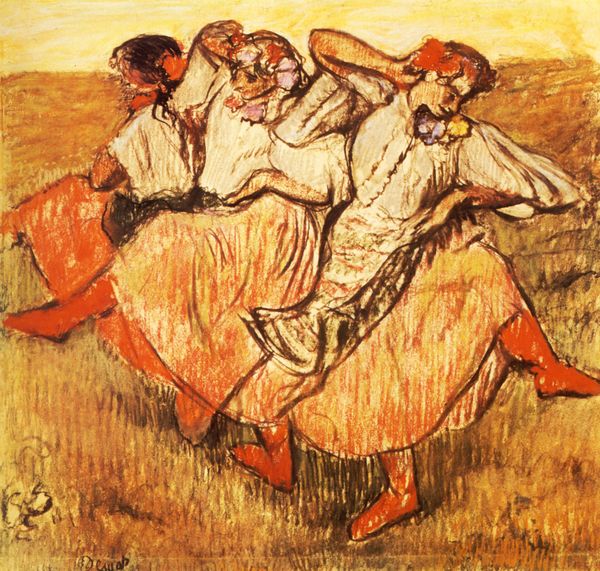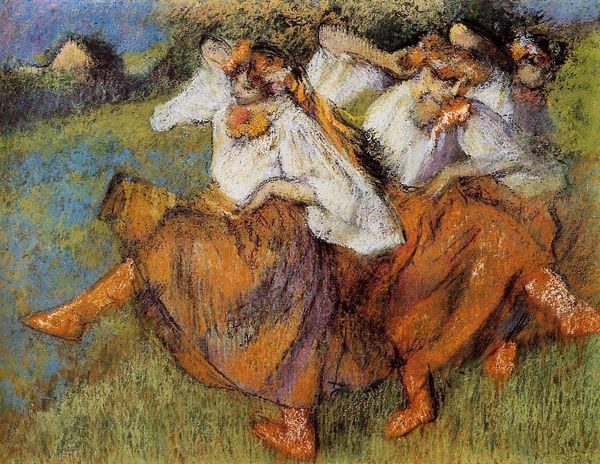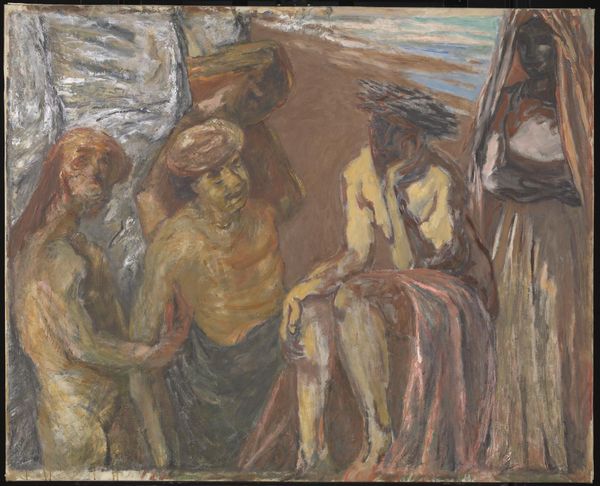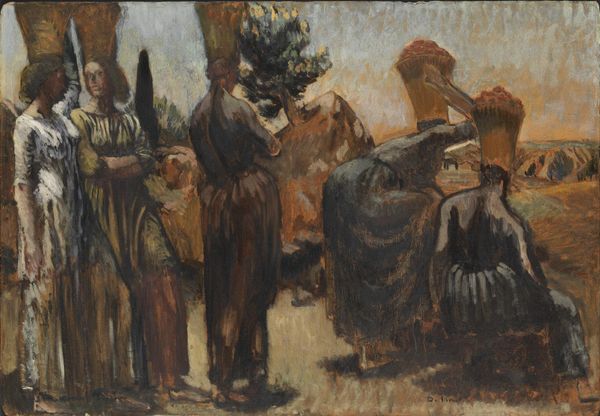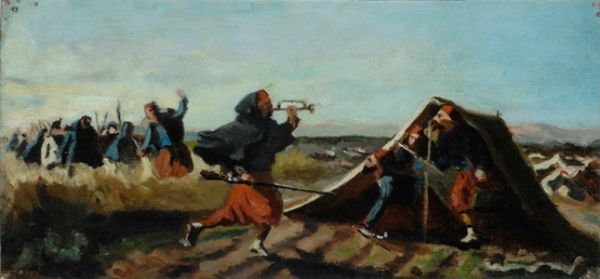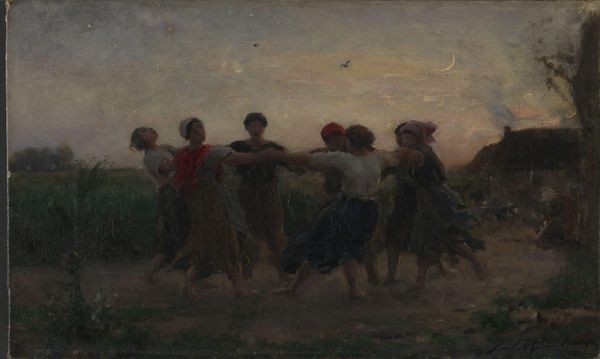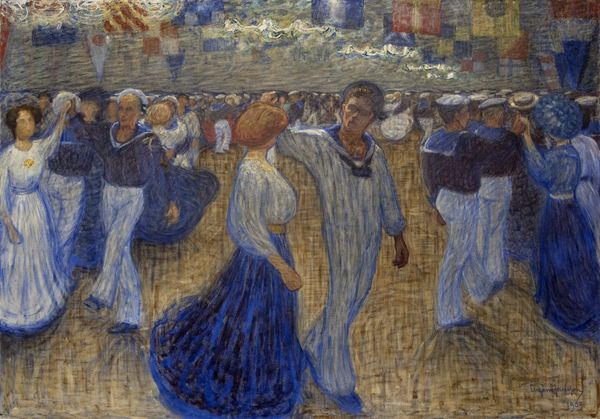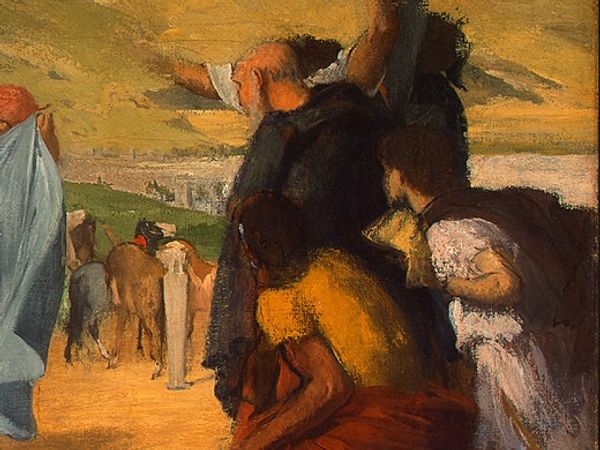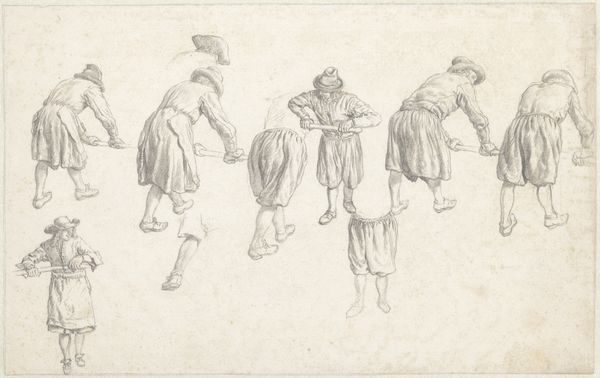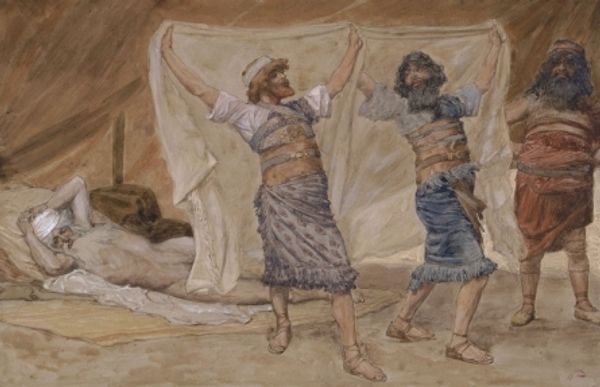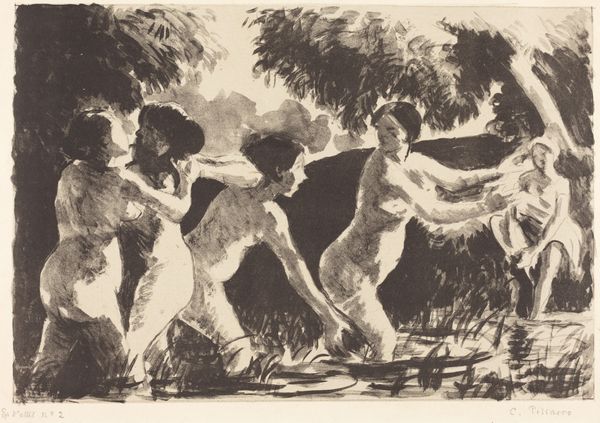
Dimensions: 24 3/4 x 25 1/2 in. (62.9 x 64.8 cm)
Copyright: Public Domain
Curator: I'm immediately struck by the energy in this piece! It's a pastel drawing by Edgar Degas, created in 1899 and titled "Dancers in Ukrainian Dress." There's a feeling of swirling motion that just jumps out. Editor: Absolutely, it feels almost dizzying, doesn’t it? The muted tones kind of contradict the vibrancy I'd expect from a dance scene, but somehow, that works. I feel like I’m seeing a memory of a dance, faded around the edges but potent nonetheless. Curator: That's an interesting observation, considering Degas's exploration of memory and the archive at the time. His representation, like you mentioned, is of women, wearing the costume which denotes national affiliation and, of course, dance. Costume can serve as armor for protection, however, as in this case, costume functions in parallel to the nation and dance which are sites of struggle against othering. These factors intersect with performance and nationalization. The relationship is not only mimetic, but productive of what constitutes a person's affiliation with national belonging and cultural traditions. Editor: Wow, that's so insightful! I love thinking about the performative aspect. It also hits me that, even in their Ukrainian dress, Degas has sort of "Degas-ified" them. The composition and pastel medium make them immediately recognizable as his work. I’m thinking of his ballerinas... he puts his signature touch on everything. He almost colonizes their image with his unique style. Is that problematic? Curator: I'm glad you brought that up. Given what we know of Degas and his tendencies toward exoticism in this period, it’s crucial to acknowledge your assessment that they've been "Degas-ified", considering that some interpret his late works as borderline racist. The history of orientalism suggests a history in which people in non-Western lands and diasporas are "staged". And in this case, Degas takes some liberties on how he imagines Ukrainians would dress during a festival of sorts. This opens opportunities to talk about issues such as post-colonial aesthetics. Editor: Food for thought, indeed! It really makes you reconsider the piece, knowing that. All things considered, even if through my initial lens, the artwork gives a vibrant energy and dynamism of culture. Curator: Precisely. It challenges us to grapple with his artistry and biases to produce thoughtful analyses about the world's image of marginalized communities. Editor: Thank you!
Comments
No comments
Be the first to comment and join the conversation on the ultimate creative platform.
